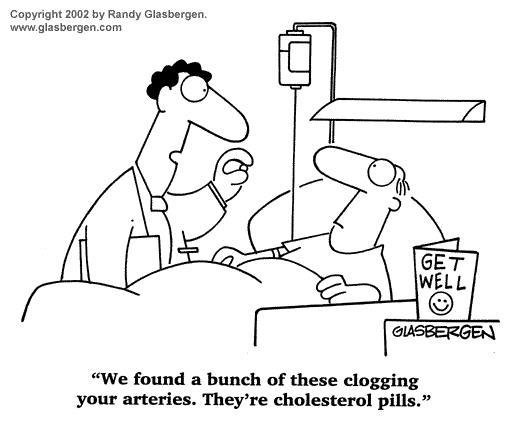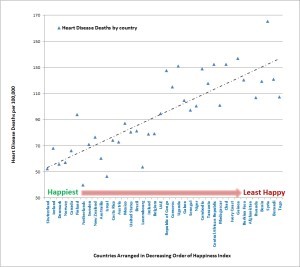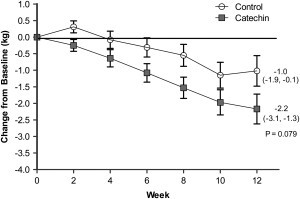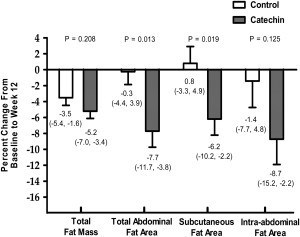Yogesh Verma's Blog, page 2
April 27, 2015
Can Statins Cause Heart Attacks?
According to a group of Japanese researchers statins deplete Coenzyme Q10 in the heart that impairs muscle function. Statins also function as mitochondrial toxins and deplete vitamin K2 which protects arteries from calcification. So essentially statins impair heart function and also make the arteries more prone to plaque formation. Both these conditions increase your likelihood of getting a stroke or heart attack. Publication link here.
Furthermore, statins cause muscle loss, memory loss and increase blood sugar, making you prone to Type II diabetes.��One thing's for sure though, that statins are excellent at lowering blood cholesterol levels. Weather lowered levels of cholesterol prevent heart attacks is yet to be seen, or, in my opinion, might never be seen.
April 24, 2015
Can Happiness Prevent Heart Attacks?
Seems like it can!
There are several causal mechanisms that suggest that happiness would lower ones risk for heart disease. The foremost reason would be that happy people are better able to adapt to life���s stresses. Stress, as we all know, is a big contributor to high blood sugar levels (via cortisol production) and high oxidative stress, both of which cause systemic inflammation which is the number one cause for heart disease (hope you are not one of those that still believes cholesterol is the cause).
I read this article on Bloomberg Business titled ���These are The Happiest Countries in the World��� where is lists 20 of the happiest countries in decreasing order from the happiest to the least happy. In the same article it also listed the 20 of the unhappiest countries in decreasing order from the unhappiest to the less unhappy. ��Here is the data from the article.
I pooled all 40 countries and arranged them in order of happiest to least happy in one scale. I then dug up world heart disease statistics by country from World Health Rankings��and plotted the death rate due to heart disease (per 100,000) for these same countries. Here is what I found (the graph below - click for full resolution).
It seems that in general death rate from heart disease goes up as the happiness index goes down for all the countries plotted (except for a few outliers). Now I know that correlation doesn���t imply causation but it���s interesting to note that people in the happiest countries also happen to have the lowest number of deaths from heart disease. Weather their happiness is the cause for their low death rate; I leave it up to the reader to judge.
���Being happy is synonymous to having a good good heart���- Leonora R Aquino
April 15, 2015
The 2 Greatest Myths in Weight Loss
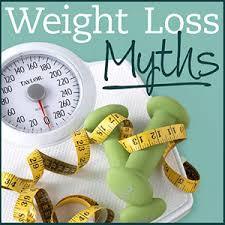
Myth 1:��Eating fat will make you fat
It has been known for almost a century now (ever since insulin was discovered) that there can be no weight gain without the master storage hormone insulin. And the number one macronutrient in our diet that increases insulin production is carbohydrate. Protein increases insulin to some extent but fat has no effect on insulin production. So if I go on a diet of 100% butter I'll lose weight faster than you can say "Supercalifragilisticexpialidocious".
Without belaboring the history of nutrition politics that led to the formation of the USDA pyramid and the resultant fattening of America, all I would say is, for weight loss, ��increase your consumption of healthy fats from nuts, seeds, avocados, olive oil, butter, ghee, coconuts etc and eat moderate amounts of healthy proteins from seeds, legumes, free pastured meats, wild caught fish, eggs and dairy. At the same time reduce your consumption of rice, wheat, sugars, processed foods and starchy vegetables. Get your carbohydrates from vegetables, nuts, seeds and low sugar fruits (berries, apples, peaches, grapefruits etc). By making these changes in your diet you will effortlessly lose weight without ever stepping in the gym or running a single mile. And you will never have to go hungry again!
Myth 2:��To lose weight you have to eat less and exercise more
This brings us to the second myth, which ironically is self contradictory given the fact that the human body is not a thermodynamic black box where you can eat less and exercise more and the body will lose weight. This in my opinion is the silliest myth that is pervasive in the weight loss community. You cannot eat less when you exercise more and you cannot exercise more if you eat less and that is due to a fact called "hunger". For more on this read here:http://inutrifit.com/.../exercise-doesnt-cause-weight-loss/
The bottomline is: weight loss is not about counting calories, but about making calories count!
February 20, 2015
Going Green for Belly-Fat Loss
Everyone these days is becoming eco friendly and going green. So, you ask, what does going green have to do with belly fat loss? In this case I am talking about green tea! The chemical compounds in green tea (catechins) have shown to be anti-inflammatory and Thermogenic (increasing metabolism).
In a double blind controlled clinical trial [1] spanning 12 weeks, 132 obese adult participants with high abdominal obesity (>36 inch) were divided into a control group and a catechins group. Both groups were asked to exercise moderately for at least 180 min/week and keep a constant calorie intake. The catechins group received 625 mg (about 3 cups worth of) catechins and the placebo group received none. During the 12 weeks it was found that the catechins group consistently lost more weight compared to the placebo group (figure 1).
Furthermore, the catechins group lost a higher percentage of subcutaneous belly fat and intra-abdominal (visceral) fat while the control group lost little to none of the belly fat (figure 2). We all know that visceral fat (surrounding our internal organs) is the dangerous fat that raises the risk for heart disease. Also found was that the catechins group experienced a higher reduction in total triglycerides (another heart disease risk parameter).
In a separate study[2] It was found that subjects consuming about 600 mg of catechins showed a higher reduction in body fat, systolic blood pressure and LDL cholesterol compared to subjects only consuming about 100 mg catechins.
And in yet another study [3] it was found that regular consumption of green tea along with inulin (a type of dietary fiber) lead to greater weight loss in 6 weeks compared to the control group. There were no adverse effects observed in any of these studies.
Daily consumption of 3 cups of green tea causes weight loss via thermogenesis. The fact that it causes a targeted loss of fat from the mid-section is icing on the cake. Not only that, there is a concurrent improvement in several other heart disease risk metrics like reduction in BP, LDL cholesterol and total triglycerides.
So drink that cup of green tea! It might not only save you some dress sizes but also prolong your life in the long run.
References:
1)��Kevin et. al., Green Tea Catechin Consumption Enhances Exercise-Induced Abdominal Fat Loss in Overweight and Obese Adults., J. Nutr. February 2009 vol. 139 no. 2 264-270.
2)��Nagao et. al., A green tea extract high in catechins reduces body fat and cardiovascular risks in humans., Obesity (Silver Spring). 2007 Jun;15(6):1473-83.
3)��Yang et.al., Beneficial effects of catechin-rich green tea and inulin on the body composition of overweight adults., Br J Nutr. 2012 Mar;107(5):749-54.
January 27, 2015
Will Disinfecting Our Environment Make Us Healthier?
90% of the cells found in our body are not ours!
We have an ecosystem of microbes that lives inside and on us. The human body has evolved with these friendly microbes for millions of years. In fact we depend on them for survival and optimum health. Each of us have a unique microbiome tailored to our environment and to our body just as we have a unique DNA. Just as DNA damage can cause unwanted mutations in our cells, damage to this microbiome causes unwanted health problems. This is what is happening with "Purell Culture" that is widespread in most developed nations. Excessive concern for hygiene has prompted the mass destruction of this microbiome, both, on our bodies by the use of disinfectants and inside our bodies by the use of antibiotics. This germophobe attitude has led to a rise in inflammation related diseases and autoimmune disorders.
The internal probiotic microbes in our gut are responsible for digesting certain foods, reducing inflammation and ensuring the health of our colon. These probiotic cultures even break down fats in the gut into smaller fatty acid chains that are more easily burned as fuel. Some of the benefits of probiotic gut bacteria are:
Weight regulation
Bowel movement
Colon health (prevention of colon cancer)
Scavenging inflammatory molecules to reduce inflammation. Inflammation is the root cause of all chronic degenerative diseases (heart disease, diabetes, dementia and many cancers)
The external microbes on our body help us fight off other pathogenic bacteria that are constantly attacking us, either by directly fighting them or by resource limiting their growth. When we "disinfect" these friendly microbes it exposes our body to those other unfriendly bacteria. Frequent infections result and to counteract that we bombard our bodies with antibiotics that damage the healthy microbes inside us. This leads to an increase in inflammation and lowered immunity leading to several autoimmune disorders like:
Asthma
Rheumatoid Arthritis
Lupus
Psoriasis
Alopecia
Hashimoto's Disease
Multiple Sclerosis
Graves' Disease
Celiac Disease
Inflammatory Bowel Disease
In fact according to this study published in 2013:
"The lack of appropriate immune stimulation during early childhood with the consequence of disturbed alignment in the sequence of encountering self- or non-self-antigens might account in the rise of atopy and autoimmune disease."
According to Thom McDade, Director of the Laboratory for Human Biology Research at Northwestern University:
"Just as a baby's brain needs stimulation, input, and interaction to develop normally, the young immune system is strengthened by exposure to everyday germs so that it can learn, adapt, and regulate itself."
Studies have even shown that children between the ages of 3 to 5 that were given probiotic supplements for six months had fewer episodes of fever, flu and colds. Furthermore studies have shown that children that grew up in farms are healthier as adults with fewer chronic diseases compared to their counterparts that grew up in cleaner environments.
So when it comes to cleanliness, use common sense instead of washing and sanitizing everything and carefully evaluate use of antibiotics for every episode of fever. Also make sure to eat fermented foods like, yogurt, kefir, kimchi, sauerkraut, natto etc., that replenish the healthy probiotic gut bacteria.
Being a little "dirty" hasn't hurt anyone, but it can go long ways towards ensuring a healthy life.

